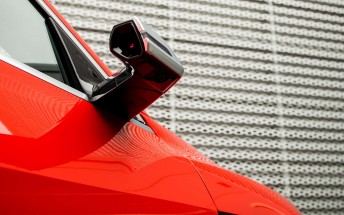Panasonic announces S1R and S1 full-frame mirrorless cameras
Panasonic has launched its new LUMIX S series of full-frame mirrorless interchangeable lens cameras. The system is based on the L-Mount, initially developed Leica and now co-developed by Panasonic and Sigma. The first batch of cameras include the LUMIX S1R and the LUMIX S1.

The LUMIX S1R has 47.3MP sensor, the highest resolution for a consumer full-frame mirrorless camera. The sensor has no low-pass filter, so you can get the maximum detail out of it. This model is intended more for landscape and wildlife photographers, who want the maximum detail in every shot. The LUMIX S1 has a smaller 24.2MP sensor, which gives it improved dynamic range and better low-light performance. This model is aimed more at general photography.
Both models feature a contrast-based AF with Panasonic DFD system, which promises fast focusing times and reliable subject tracking. The camera features face and eye AF and also uses AI for detecting subjects and keeping focus locked even if the subject turns around.

Both models feature built-in 5-axis image stabilization. This works alongside the stabilization built into the lenses for a stable shot even at slow shutter speeds and during video.
Both models feature a high resolution mode, which uses the pixel shift technology to move the image sensor around and capture an even more detailed image. The S1R can capture a 187MP image in this mode, while the S1 can capture a 96MP image. The camera needs to be on a tripod for this to work and it works best with still subjects, such as landscape or architecture.
High speed burst mode is also possible with the 6K and 4K photo mode. You can either capture 6K images at 30fps or 4K images at 60fps.

The cameras also boast excellent video capabilities. Both cameras can record videos at up to 4K in 60fps with an APS-C crop. You can also record 4K in 30/25/24fps or 1080p with no crop and also no recording limit. 1080p video can be captured up to 180fps for 6x slow motion.
The camera features a full size HDMI-A connector for video out, along with a microphone in and headphone out jacks. In future, you will be able to record 4:2:2 10-bit 4K 30p video internally and 4K 60p video via HDMI with V-log with a paid software update that will be coming later this year.
Both cameras feature the world's highest resolution 5760k dot OLED live viewfinder, with a frame rate choice of 60 or 120fps. There's also a 2100k dot articulating touchscreen display on the back and a status LCD on the top.
Both camera bodies are weather sealed, with a magnesium allow frame for reliability. The camera is also freeze resistant for up to -10 degree Celsius.

Both cameras feature a dual card slot, which is a huge win over the Canon EOS R and the Nikon Z7/Z6, which feature a single slot each. The LUMIX S models support an SDXC and XQD simultaneously, which is a massive advantage for wedding, wildlife and sports photographers for whom losing photos from a single card can mean complete disaster.
The cameras also include Bluetooth 4.2 LE and Wi-Fi 802.11ac for connectivity with a smartphone and USB-C 3.1 connection USB-PD for fast charging directly within the camera.
A camera is only as good as the lenses it supports and the new S series is being launched alongside three new lenses. These include the LUMIX S PRO 50mm F1.4, the LUMIX S PRO 70-200mm F4 OIS, and the LUMIX S 24-105mm F4 Macro OIS. The system will support any L-Mount lens from Leica, Panasonic, and Sigma but these three in particular are designed to work best with these two new cameras. Panasonic has promised 10 or more lenses by 2020 for this system.
The LUMIX S1R is priced at $3699 body-only and for $4599 with the 24-105mm F4 lens. The LUMIX S1 is priced at $2499 body-only and $3399 with the same lens.
Related
Reader comments
- Anonymous
- 04 Feb 2019
- Sa%
Made me laugh
- Anonymous
- 03 Feb 2019
- Ibx
Nice cameras by Panasonic
- nick
- 03 Feb 2019
- P%0
pricing is just plain ridiculous!







 Xiaomi
Xiaomi Samsung
Samsung Apple
Apple Infinix
Infinix Xiaomi
Xiaomi


